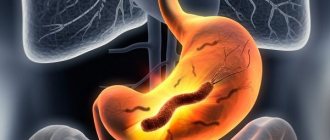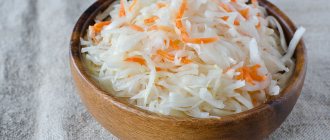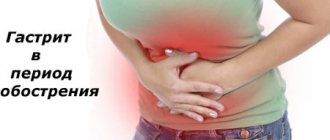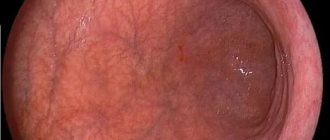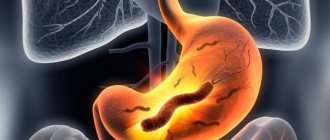Patient's complaints
– For aching pain in the epigastrium and left hypochondrium that occurs after eating (if the diet is violated) at any time of the day, without irradiation, accompanied by the urge to defecate. Side effects:
– A feeling of heaviness and discomfort in the upper third of the abdomen, heartburn, belching with a sour taste at different times of the day.
– For episodic rises in blood pressure with maximum figures of up to 160/100 mm. rt. Art. (adapted to 140/80), accompanied by headache, flashing spots before the eyes.
- Frequent, prolonged attacks of palpitations, accompanied by weakness, shortness of breath, dizziness, discomfort in the left half of the chest.
- Feeling of cardiac arrest and irregularities in the heart area.
– For periodic aching, pressing pain in the chest, accompanied by a feeling of lack of air, occurring during physical activity, relieved by taking nitroglycerin.
– For periodic aching pain in the hip joint that occurs at rest and during physical activity at any time of the day, without irradiation.
Causes
Indicating the etiology in the medical history during exacerbation of gastritis is very important. Since it is this point that shows the cause of the disease
The etiology of the disease can be very different. If we are talking about food, then it is worth noting that drinking alcohol, smoking, even banal overeating has a very strong effect on the factors causing acute gastritis.
In the medical history, the etiological analysis also includes endogenous etiological factors for the occurrence of acute gastritis. These are factors at the cellular level: massive breakdown of proteins, increased nitrogen content in the blood, metabolic disorders, kidney and liver diseases (atrophy).
Anamnesis of life
She was born in the Vladimirov region in 1938, on time, as the second child in the family. Breastfed. She started walking and talking on time. Living conditions in childhood are normal. I began to develop and learn normally, without any delays. During my life I visited the following institutions: kindergarten → school → college → work.
Average family budget. Housing and communal conditions are satisfactory. He eats normally, loves hot, fried, salty, peppery foods, tea and coffee, vegetables and fruits. He doesn’t do exercises or do physical exercises. Maintains personal hygiene.
Drinks alcohol “on holidays” in small quantities. I do not smoke. Doesn’t drink strong coffee or tea too much.
As a child I suffered from measles and chicken pox.
At age 8, an appendectomy was performed. Complication – appendicitis with purulent peritonitis.
In 2006, a polypectomy was performed.
5 pregnancies, 2 births, 3 abortions.
Menopause from age 50.
Denies gynecological operations and diseases.
Last examination by a gynecologist in 2006. No pathology was found.
She does not experience any intolerance to medications, vaccines, or serums. Allergy to honey - manifested by itchy skin.
History of a patient with chronic gastritis
The doctor carefully examines the patient’s medical history, his general health, and identifies concomitant diseases. This is necessary to determine contraindications for taking certain medications.
The specialist performs fibrogastroscopy (fibroesophagogastroduodenoscopy, or FGSD), based on the results of which he determines the type, stage and form of gastritis, as well as the acidity of gastric juice and determines the causes of the disease.
Onset of the disease chronic gastritis
Chronic gastritis often occurs as a primary chronic disease, i.e. does not have an episode of acute onset, so patients cannot determine the date of onset of the disease. With peptic ulcer disease, patients, as a rule, can clearly date the time of onset of the disease.
The nature of the course of chronic gastritis
A constant progradient course is characteristic of chronic gastritis. A wave-like recurrent course with a clearly defined seasonality of exacerbations is characteristic of duodenal ulcer. An undulating recurrent course without a clearly defined seasonality of exacerbations is characteristic of duodenal ulcer.
Causes of exacerbations in chronic gastritis
In chronic gastritis, exacerbation is associated with errors in diet. Exacerbations of gastric ulcer disease are often associated with psycho-emotional stress. Exacerbations of duodenal ulcerative disease are of a pronounced seasonal nature. A change in the nature of pain and the course of the disease indicates the addition of complications.
History of present illness
Since 2003, she has noticed the appearance of aching pain in the epigastric region, a feeling of heaviness in the right hypochondrium, and loose stools. She independently took no-shpa, almagel, and enzyme preparations with inconsistent effects. She was not treated outpatiently.
The condition has worsened over the past weeks, and the pain in the epigastrium has intensified.
She was admitted to the FTC for dynamic observation, examination and therapy correction.
Therapy was prescribed: Maninil, Mezim-forte, Cordaflex-retard, Duspatalin.
After treatment, she was discharged from the hospital, her condition improved, and further use of Mezim-Forte was recommended.
Throughout her life she considered herself healthy, but was not examined. I was worried about headaches, but I didn’t measure blood pressure; I started monitoring the numbers in 1980 after suffering a hypertensive crisis. Since then, the maximum blood pressure numbers have reached 280/140, adapted to blood pressure = 160/90. She did not receive adequate antihypertensive therapy.
Since 1989 he has suffered from diabetes. She was treated under the supervision of an endocrinologist with amiril and Siofor.
Since 1990, I have been troubled by shortness of breath and pressing pain in the chest during moderate physical activity. Based on these complaints, she did not go to the clinic and was not treated.
Modern research on gastritis
Research on gastritis in the 20th century was aimed at promoting the x-ray method of examination as less traumatic compared to endoscopy. But very quickly it became clear why it could not be used: a more or less objective and accurate diagnosis of gastritis using x-rays is not possible.
Over time, the safety of gastroscopy has increased, and its spread has made it possible to seek answers to the question of why gastritis occurs in a more diverse manner. We managed to collect a lot of information about the disease.
In 1947, a relatively objective classification of gastritis was given. In the same year, Schindler’s monograph entitled “Gastritis” was published, in which the author reported on the frequent combination of a disease such as fibrinous gastritis with duodenogastric reflux. Based on previously conducted research, the author of the work sought to bring into it the most objective information possible.
Before each operation, Schindler performed gastroscopy on patients, trying to find points of contact between the histological and endoscopic images of the gastric mucosa.
What actually causes gastritis was only discovered towards the end of the 20th century. In 1984, Barry James Marshall convincingly proved that most types of disease can be caused by a bacterium called Helicobacter Pylori. To date, the disease has been fully studied and can be effectively treated with various methods.
Helicobacter pylori bacteria
Endoscopic examination for gastritis
History of gastritis
Age: 09/14/1954 (50 years old)
Address: Frunzenskaya embankment, 32 apt. 223
Place of work: not working
Date and time of hospitalization: at 12:00 08.10.2004
Entered 1st t/o at 12:20 (hall)
Diagnosis upon admission: exacerbation of chronic gastritis, chronic pancreatitis, anemia of unknown origin, intestinal Cr (?)
COMPLAINTS UPON ADMISSION
General weakness, decreased performance. Abdominal pain along the intestines. Constipation. Slight nausea for a long time. And also aching pain in the stomach area.
Over the past two years, the pain has been constant, especially after eating, sometimes at night. The feeling of fullness and nausea have increased over the last year. She was not treated or examined. She suffers from constipation for a long time and is treated with folk remedies. The last time constipation lasted about 10 days. In the hospital, due to the therapy, regular stools of normal color and smell were restored. Over the past few days, he has noticed increased frequency of urination, especially at night. At the same time, he does not experience any pain or sharpness.
Born and raised in Moscow in a working-class family. There is an older brother. She grew and developed normally. After graduating from school, she entered a vocational school. After graduating, she worked until recently at a factory as a troubleshooter. It hasn't worked for the last two years.
Household history: lives in a 1-room apartment. Financially secure. Eats regularly.
Occupational history: history of occupational hazards (cold, working with machine parts, inhalation of industrial dust). Does not smoke. Doesn't abuse alcohol.
Previous illnesses: periodically influenza, ARVI. I was rarely sick as a child. Perforation of appendicitis in 1995. At the age of 40, psoriasis was diagnosed. According to the patient, varicose veins in the legs appeared after childbirth. She has been suffering from internal and external hemorrhoids for 10 years. History of 1 birth, 1 miscarriage and 6 abortions.
Denies diabetes, tuberculosis, viral hepatitis, and sexually transmitted diseases.
The epidemiological history is not burdened. No allergies.
The condition is satisfactory. Consciousness is clear. Position active. No postural abnormalities were detected, and gait was not impaired. The physique is normal. The constitution is normosthenic. Height 165 cm, weight 60 kg. The skin is pale in color, clean, dry, elastic. The nail plates are of normal transparency, the surface is smooth. Hair growth is not affected. The musculoskeletal system is without visible changes, the muscles are painless. Muscle tone is normal. The joints are not changed. The skin over them is of normal color. Palpation revealed no changes in the periarticular tissues or pain. No contractures or areas of compaction were identified. The range of passive and active movements is fully preserved. Regional lymph nodes (occipital, posterior cervical, supraclavicular, axillary, ulnar, inguinal) are not palpable. t=36.8 C*.
RESPIRATORY SYSTEM
Breathing through the nose is free. No discharge from the nasal passages is observed. The voice is clear. Upon examination, the pharynx is not hyperemic, the tonsils do not extend beyond the edges of the palatine arches, and there are no plugs in the lacunae of the tonsils. With comparative percussion, the sound is pulmonary. The mobility of the lower edge of the lungs along the mid-axillary line is 5 cm on the right, 5 cm on the left.
Treatment
Therapy for chronic antral gastritis is complex and individual for each patient. The complex of treatment measures includes:
- taking medications;
- diet;
- use of traditional medicine.
Before starting treatment, the patient must undergo a course of therapeutic fasting, which lasts no more than two days. In the erosive form of gastritis, fasting is replaced by drinking weak black tea or purified water. After which a re-examination by a specialist takes place and medications are prescribed. Certain medications are used depending on the cause of the exacerbation. In addition, they are necessary to eliminate symptoms and associated disorders. Patients are often prescribed a course of antibiotics, antacids aimed at reducing the acidity of gastric juice, coating substances, as well as agents that normalize the formation of hydrochloric acid. In addition, it is necessary to take medications to improve stomach activity. If an exacerbation of the disease was provoked by taking medications, then the treatment strategy consists of discontinuing them and prescribing other substances.
Surgical intervention is used very rarely, only when the hyperplastic form occurs. In such cases, surgery is performed to remove the affected part of the stomach.
The most important condition for the effectiveness of treatment is proper nutrition. Diet therapy involves avoiding foods such as alcoholic and carbonated drinks, canned and smoked foods, fatty dairy products, hot sauces and seasonings, fatty foods and flour products. At the same time, the diet does not prohibit the consumption of lean meats and fish, cooked in the oven or boiled, sweet berries and fruits, any cereals, but without added fat, vegetarian broths, white bread and weak tea.
To treat chronic antral gastritis with folk remedies, flax seeds are often used, which can be used as a seasoning or in the form of a decoction, potato juice, as well as a herbal mixture based on St. John's wort and chamomile, celandine, yarrow and aloe.
History of gastritis
Age: 09/14/1954 (50 years old)
Address: Frunzenskaya embankment, 32 apt. 223
Place of work: not working
Date and time of hospitalization: at 12:00 08.10.2004
Entered 1st t/o at 12:20 (hall)
Diagnosis upon admission: exacerbation of chronic gastritis, chronic pancreatitis, anemia of unknown origin, intestinal Cr (?)
COMPLAINTS UPON ADMISSION
General weakness, decreased performance. Abdominal pain along the intestines. Constipation. Slight nausea for a long time. And also aching pain in the stomach area.
Over the past two years, the pain has been constant, especially after eating, sometimes at night. The feeling of fullness and nausea have increased over the last year. She was not treated or examined. She suffers from constipation for a long time and is treated with folk remedies. The last time constipation lasted about 10 days. In the hospital, due to the therapy, regular stools of normal color and smell were restored. Over the past few days, he has noticed increased frequency of urination, especially at night. At the same time, he does not experience any pain or sharpness.
Born and raised in Moscow in a working-class family. There is an older brother. She grew and developed normally. After graduating from school, she entered a vocational school. After graduating, she worked until recently at a factory as a troubleshooter. It hasn't worked for the last two years.
Household history: lives in a 1-room apartment. Financially secure. Eats regularly.
Occupational history: history of occupational hazards (cold, working with machine parts, inhalation of industrial dust). Does not smoke. Doesn't abuse alcohol.
Previous illnesses: periodically influenza, ARVI. I was rarely sick as a child. Perforation of appendicitis in 1995. At the age of 40, psoriasis was diagnosed. According to the patient, varicose veins in the legs appeared after childbirth. She has been suffering from internal and external hemorrhoids for 10 years. History of 1 birth, 1 miscarriage and 6 abortions.
Denies diabetes, tuberculosis, viral hepatitis, and sexually transmitted diseases.
The epidemiological history is not burdened. No allergies.
The condition is satisfactory. Consciousness is clear. Position active. No postural abnormalities were detected, and gait was not impaired. The physique is normal. The constitution is normosthenic. Height 165 cm, weight 60 kg. The skin is pale in color, clean, dry, elastic. The nail plates are of normal transparency, the surface is smooth. Hair growth is not affected. The musculoskeletal system is without visible changes, the muscles are painless. Muscle tone is normal. The joints are not changed. The skin over them is of normal color. Palpation revealed no changes in the periarticular tissues or pain. No contractures or areas of compaction were identified. The range of passive and active movements is fully preserved. Regional lymph nodes (occipital, posterior cervical, supraclavicular, axillary, ulnar, inguinal) are not palpable. t=36.8 C*.
RESPIRATORY SYSTEM
Breathing through the nose is free. No discharge from the nasal passages is observed. The voice is clear. Upon examination, the pharynx is not hyperemic, the tonsils do not extend beyond the edges of the palatine arches, and there are no plugs in the lacunae of the tonsils. With comparative percussion, the sound is pulmonary. The mobility of the lower edge of the lungs along the mid-axillary line is 5 cm on the right, 5 cm on the left.
Top standing height
Front right: 3 cm above the level of the collarbone.
Front left: 3.5 cm above the level of the collarbone.
Posterior right: at the level of the spinous process of the VII cervical vertebra.
Posterior left: 0.5 cm above the level of the spinous process of the VII cervical vertebra.
Complaints from patients with gastritis
Chronic gastritis is clinically manifested by both local and general disorders that usually appear during periods of exacerbation
Gastritis can hardly be called a pleasant disease; the course of the disease is often characterized by poor health of the patient and the occurrence of a number of unpleasant diseases. The patient's complaints can be of a different nature; this, first of all, depends on the stage of the disease. In acute gastritis, patients complain of acute pain, high fever, intense diarrhea and vomiting. Complaints with chronic gastritis are more likely to be heartburn, dull arching pain, belching, and less often - diarrhea or constipation. Supervision of patients with gastritis should be carried out in an outpatient or inpatient setting. More information about the supervision of patients with acute and chronic gastritis can be found on the website https://gastritinform.ru//.
What is gastritis of the stomach
Gastritis is inflammation of the upper mucous layer of the stomach. The main cause of gastritis is the bacterium Helicobacter pylori. However, it can be in the body without causing gastritis.
It is the development of gastritis that causes bacteria to be provoked by a general decrease in immunity, hormonal imbalance, and the entry of dangerous chemicals and drugs into the stomach. Other reasons are poor diet and lifestyle in general, frequent stress, excessive consumption of alcohol and cigarettes, anatomical features of the body, and radiation damage.
Gastritis is inflammation of the upper mucous layer of the stomach
Like most other diseases, gastritis can be acute or chronic.
Often gastritis is asymptomatic, and it can be identified by complaints that seem not to be related to the stomach.
But there are some common symptoms, such as heartburn, abdominal pain, nausea and vomiting, white coating on the tongue (which indicates diseases of the digestive system), sour belching, and sometimes constipation or diarrhea.
Patient complaints with gastritis of the stomach
In most cases, pain forces the patient to see a doctor. Pain with gastritis and duodenitis has a dull, aching character, accompanied by a feeling of heaviness, fullness, pressure under the chest and in the upper half of the abdomen. The pain is associated with food - it appears after eating 15-30 minutes, has a long duration, and does not radiate anywhere.
Along with pain, patients often complain of decreased appetite, belching, heartburn, bloating, bad taste in the mouth, and nausea.
If gastritis is accompanied by a decrease in the secretion of gastric juice, then there are complaints of periodic diarrhea, rumbling in the stomach, weight loss, and symptoms of hypovitaminosis appear due to impaired absorption of vitamins.
White coatings appear on the tongue; when palpating the upper abdomen, people complain of pain.
Chronic gastritis patient complaints
Chronic gastritis is a long-term inflammatory lesion of the gastric mucosa, occurring with its structural restructuring and disruption of the secretory (acid- and pepsin-forming), motor and endocrine (synthesis of gastrointestinal hormones) functions of the stomach.
Gastritis is called chronic when inflammation of the inner surface of the stomach occurs regularly or symptoms persist for a long time. In the chronic form, as a rule, there are no specific symptoms, so the person feels quite normal.
Exacerbations occur after consuming fatty or spicy foods, alcoholic and carbonated drinks, taking aspirin, paracetamol and other drugs that negatively affect the gastric mucosa. One of the symptoms is persistent bowel dysfunction (usually diarrhea), other signs of a chronic process: bloating, a feeling of a full stomach.
What are the complaints with chronic gastritis?
When you experience the first complaints, pain and/or feeling of heaviness, bloating in the abdomen, belching, sour heartburn, or feeling unwell, you should immediately consult a doctor, because gastritis can be complicated by peptic ulcers and even stomach cancer. First of all, the doctor finds out the nature of the complaints, their duration, the nature of the diet, and the presence of stressful situations.
The main complaints with chronic gastritis: bad breath, belching, pain in the upper third of the abdomen, unpleasant taste in the mouth.
With chronic gastritis, with increased stomach acidity, patients complain of pain on an empty stomach, belching with a sour taste.
Gastritis with decreased gastric secretory is characterized by the appearance of air belching, bloating, nausea, rumbling in the stomach, lack of appetite, diarrhea, abdominal pain after eating.
Supervision of a patient with gastritis
Supervision - (lat. curatio care, care, treatment; synonym: patient management) in medicine, the totality of a doctor’s actions in diagnosing a disease and treating a patient, as well as in preparing medical documentation.
Characteristics of supervision for gastritis:
- the patient’s main complaints on the day of supervision, his diagnosis;
- analysis of the condition of the skin, muscle, cardiovascular, endocrine, genitourinary, and nervous systems;
- results of laboratory tests and blood tests. Forecasts for recovery.
Supervision of patients with acute gastritis
Acute gastritis is an acute inflammation of the gastric mucosa, which occurs with short-term exposure to strong irritants.
Acute gastritis occurs suddenly and is severe, often accompanied by the formation of so-called erosions (small defects in the mucous membrane) of the stomach and the development of bleeding.
Exacerbation of chronic (already existing gastritis) should be distinguished from acute gastritis.
As a rule, belching, heaviness and sharp pain in the epigastric region, nausea, vomiting, weakness, and dizziness occur. Some patients vomit brown or bloody contents. After 1-2 days, loose stools appear. Most patients had not previously suffered from diseases of the stomach and intestines. To diagnose acute gastritis, gastroscopy is performed, which is more correctly called esophagogastroduodenoscopy EGDS
To diagnose acute gastritis, gastroscopy is performed, which is more correctly called esophagogastroduodenoscopy (EGDS). Acute gastritis is usually treated by a gastroenterologist.
First of all, the cause that led to acute gastric injury must be established, and, if possible, eliminated. Sometimes gastric lavage is necessary. During the first day of illness, it is recommended to abstain from eating. You should follow a diet for acute gastritis - mucous soups, jelly, jelly, etc.
For bleeding, intravenous medications are used to reduce the production of hydrochloric acid in the stomach. In addition, agents are prescribed that promote the healing of erosions by forming a protective “film” on their surface - Venter, sucralfate, etc.
Supervision of patients with chronic gastritis
Chronic gastritis is clinically manifested by both local and general disorders, which, as a rule, appear during periods of exacerbation.
Local disorders are characterized by symptoms of dyspepsia (heaviness and a feeling of pressure, fullness in the epigastric region, appearing or intensifying during meals or shortly after eating, belching, regurgitation, nausea, unpleasant taste in the mouth, burning in the epigastrium, often heartburn, which indicates a violation of evacuation from the stomach and reflux of gastric contents into the esophagus).
These manifestations more often occur in certain forms of chronic antral gastritis, which lead to impaired gastric emptying, increased intragastric pressure, increased gastroesophageal reflux and exacerbation of all of these symptoms. In chronic gastritis of the body of the stomach, manifestations are rare and are reduced mainly to heaviness in the epigastric region that occurs during or shortly after eating.
Chronic gastritis is clinically manifested by both local and general disorders that usually appear during periods of exacerbation
In patients with Helicobacter pylori-associated chronic gastritis, which occurs for a long time with increased secretory function of the stomach, signs of “intestinal” dyspepsia may appear in the form of defecation disorders. They are often episodic in nature and often become the basis for the formation of irritable bowel syndrome (gastrointestinal, gastrointestinal reflux).
Stages of diagnosing chronic gastritis:
- clinical diagnosis: - the patient’s complaints, anamnesis, and examination data of the patient are analyzed, a presumptive diagnosis is made and a rational plan for instrumental examination is drawn up;
- endoscopic diagnosis with mandatory biopsy: - the presence of Helicobacter pylori, the nature and localization of changes in the gastric mucosa, the presence of precancerous changes in the gastric mucosa are clarified. For a biopsy, at least 5 fragments are taken (2 from the antrum, 2 from the body of the stomach, 1 from the angle of the stomach).
- laboratory diagnostics: - clinical blood test, biochemical blood test, clinical urine test, clinical stool test, stool occult blood test, detection of Helicobacter pylori infection;
- ultrasound examination of the liver, pancreas, gall bladder - to identify concomitant diseases of the gastrointestinal tract;
- intragastric pH-metry: determination of the state of secretion and diagnosis of functional disorders in acid-related gastrointestinal diseases;
- electrogastroenterography: study of the motor-evacuation function of the gastrointestinal tract to determine duodenogastric reflux;
- manometry of the upper gastrointestinal tract: with the help of which the presence or absence of reflux gastritis is determined (normally in the duodenum the pressure is 80-130 mm water column, in patients with reflux gastritis it is increased to 200-240 mm water column .).
Treatment of chronic gastritis is carried out on an outpatient basis; the course of treatment, including diagnosis, is designed for 14 days.
Among medications for the treatment of chronic gastritis, proton pump inhibitors, H2-histamine receptor blockers, prokinetics, selective M-anticholinergics, and antacids are used.
For some forms of Helicobacter pylori-associated gastritis, eradication (destruction) of Helicobacter pylori is recommended.
Supervision of a patient with gastritis pediatrics
Diagnosis of gastritis includes a detailed medical history, physical examination, endoscopy, blood tests (complete blood count and iron test), and stool occult blood test.
A gastroenterologist may also check a patient's vitamin B12 levels to rule out pernicious anemia (B12 deficiency anemia). Sometimes a child's immune system attacks the stomach cells themselves.
As a result of this attack, the absorption of vitamin B12 is impaired.
Clinical manifestations of acute gastritis in children can develop 4-12 hours after exposure to an irritating agent.
In this case, the general condition of the child is disturbed; he is bothered by pain in the upper abdomen, belching, heartburn, nausea, vomiting, salivation or dry mouth.
The tongue is covered with a white coating, the skin is pale, the pulse is frequent, blood pressure is reduced. The duration of alimentary acute gastritis in children averages 2-5 days.
With toxic-infectious acute gastritis in children, there is severe intoxication, increased body temperature, repeated vomiting of undigested food with mucus and bile, frequent loose stools, leading to dehydration, increasing weakness and lethargy. Dyspeptic symptoms (dyspepsia) in acute allergic gastritis in children are accompanied by skin itching, rash and Quincke's edema.
Clinical manifestations of acute gastritis in children can develop 4-12 hours after exposure to an irritating agent
Corrosive gastritis in children with chemical burns is characterized by a severe course, accompanied by intense burning pain in the stomach and when swallowing; repeated vomiting mixed with mucus, blood and tissue fragments. Depending on the severity of corrosive gastritis, children may develop asphyxia, perforation of the stomach wall and bleeding, peritonitis, kidney damage, liver damage, cardiovascular failure, shock and death.
Acute phlegmonous gastritis in children is manifested by high fever, severe abdominal pain, vomiting mixed with pus, severe general condition and can lead to peritonitis and perigastritis.
A child with chronic gastritis experiences a gradual decrease in appetite, dull and aching pain in the abdomen (intensifying 10-15 minutes after eating), acid belching, nausea, and unstable stool.
With chronic gastritis, children develop signs of intoxication and digestive disorders: general malaise, increased fatigue, weight loss, pale skin, slight increase in body temperature.
For toxic-infectious gastritis in children, antibiotics, enzymes (pancreatin), adsorbents (dioctahedral smectite, silicon dioxide) are used; in case of dehydration, infusion therapy is carried out.
After 12 hours, the child is allowed dietary fractional meals (low-fat broths, slimy puree soups, porridges, jelly) with a gradual expansion of the menu and transfer to a common table, excluding spicy, smoked, fried and roughage foods.
If phlegmonous gastritis in children and gastric perforation are suspected, surgical treatment is indicated.
A set of therapeutic measures for children suffering from chronic gastritis includes strict adherence to a protective regime and diet, drug therapy, physiotherapy and sanatorium-resort treatment.
In the presence of Helicobacter pylori infection, children with chronic gastritis are prescribed various treatment regimens, including antibiotics (amoxicillin, clarithromycin), nitroimidazole derivatives (nifuratel, furazolidone), colloidal bismuth salts, proton pump inhibitors (omeprazole, lansoprazole), probiotics (lacto- and bifidobacteria). The duration of treatment for chronic gastritis in children depends on the severity of the process, severity of symptoms, association with H. pylori, and is about 3-4 weeks.
Sources:
- https://www.medkompas.ru/about-health/diseases/gastrit/
- https://www.obozrevatel.com/health/bolezni/hronicheskij-gastrit.htm
- https://azbyka.ru/zdorovie/gastrit-simptomy-diagnostika-i-lechenie
- https://medportal.ru/enc/gastroenterology/gastritis/3/
- https://gastritinform.ru/www.gastroclinic.ru/diseases/gastrit/
- https://www.krasotaimedicina.ru/diseases/children/gastritis
Source: https://gastritinform.ru/gastrit-zhaloby/
Features of gastritis treatment yesterday and today
Effective treatment of gastritis is possible without mandatory hospitalization, especially if the disease is uncomplicated. In most cases, outpatient treatment is sufficient.
The specific scheme and method of treatment are chosen by the specialist individually in each case and largely depend on the degree of complexity and form of the pathology. That being said, there are general points that should be taken into account in order to achieve a speedy recovery.
Gastritis caused by any of the factors for a long time (over many decades) was treated mainly with the help of a specially designed diet and medications that eliminated the most severe symptoms.
Dietary nutrition in this case is based on several basic principles:
- food must be chewed thoroughly;
- meals need to be split up, that is, eat more than three times a day, but in small portions;
- All dishes should not be too hot or cold.
It is not allowed to include hot, sour, spicy and salty foods, mushrooms, citrus fruits, rye bread and garlic in the diet. In addition, you should refrain from coarse fiber, which irritates the gastric mucosa. We are talking about cabbage, radishes, radishes and a number of other products, the list of which is strongly recommended to be read in more detail.
Smoking and drinking alcohol can also worsen the patient's condition. During the period of remission, you can eat as usual, slightly reducing salt intake and eliminating carbohydrates.
Today, when the causative agent of the disease is known to medicine, therapy for gastritis includes, among other things, taking antibiotics.
